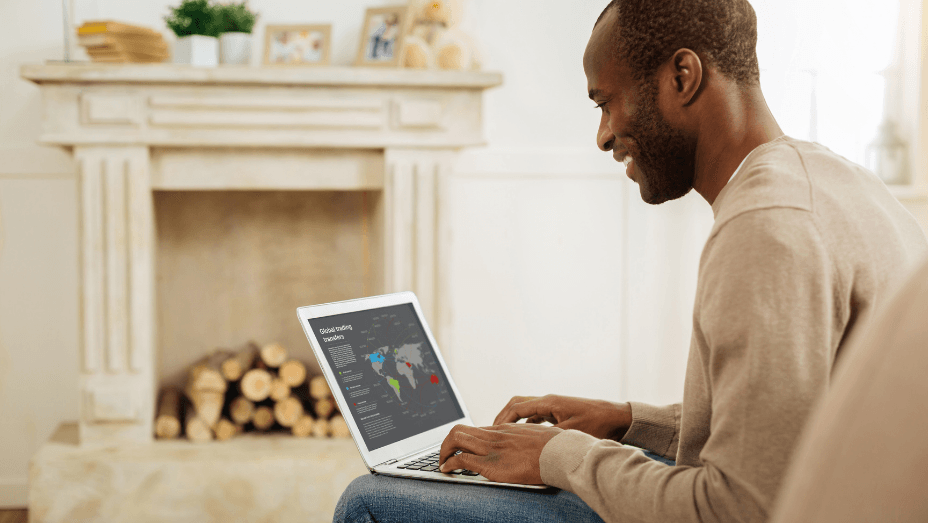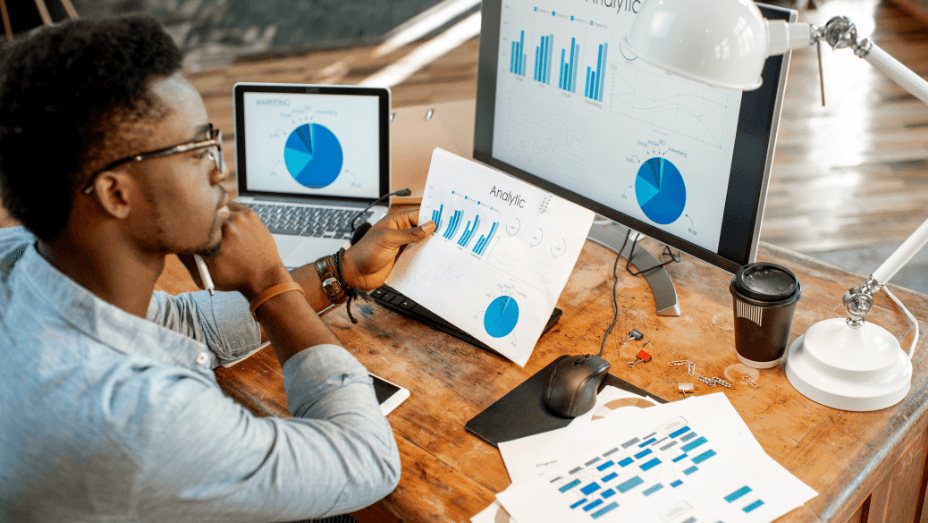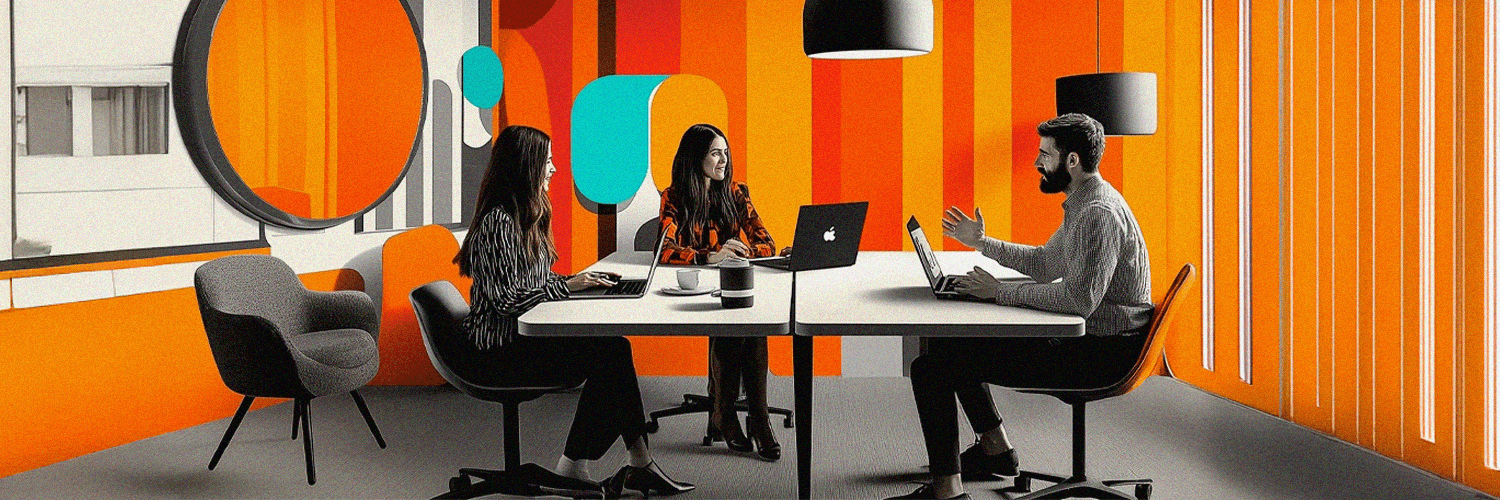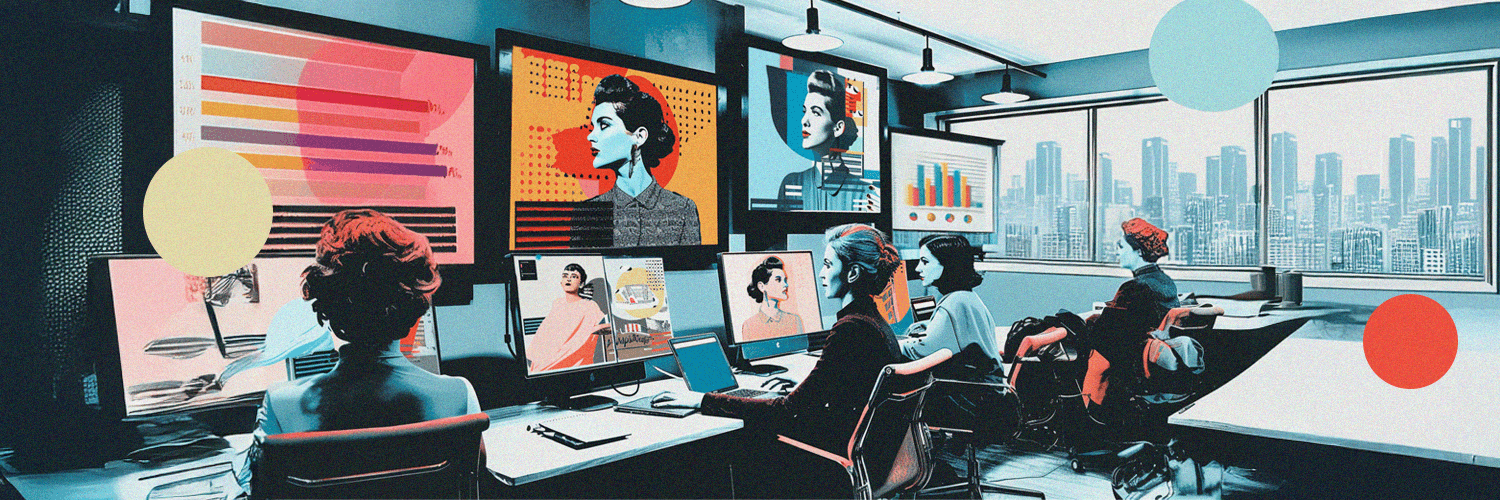“What is/was your worst workplace experience?”
You sure don't want your company name to appear in such a forum discussion thread, do you?
Especially now, during the Great Resignation (yes, we’re still living it), when the struggle for acquiring and retaining the best talent is still fierce.
Or maybe you’re 100% positive that there’s zero risk of having your company mentioned there. Since, in this hybrid onboard world, you’ve already offered your employees more options for flexible working.
And since flexible working has become the no. 1 workplace benefit on employees’ priority list you’re pretty… safe, right?
Not necessarily.
“The employee experience is about more than ping-pong tables and snacks.” (Brent Hyder, President and Chief People Officer at Salesforce).
And so is the workplace experience about more than allowing employees to choose their work schedule. Or adopting a 4-day work week or offering them the best digital workplace technologies.
That’s why, in today’s post, we’ll take a look at what workplace experience really means. Particularly now, when people aren’t always working in a physical place.
Why you’ll want to make it your priority and what you can do to improve it.
TL;DR:
- Workplace experience is the human-centered approach to creating the best environment for employees to do their work in.
- It has 3 components: physical workplace, digital workplace, and people (relationships, policies, and company culture).
- In hybrid work environments, it is important to adopt a holistic approach and pay attention to how these 3 components overlap.
- Intentional design of workspaces, backed by employees' needs, can boost productivity and improve overall company performance.
- Outdated reports and failure to collect real-time data can lead to underuse of office space and unnecessary high real estate costs.
- Providing the best workplace experience can improve employee engagement and productivity, leading to more hiring opportunities and lower real estate costs.
- Low employee engagement and productivity often stem from a poor workplace experience, and collaboration, connection, and organizational culture are key priorities to address.
- Employees are 2.1X more likely to recommend the company they work for if it caters to their needs of time and location flexibility.
What Is Workplace Experience?
Workplace experience is the human-centered approach to creating the best environment for your employees to do their work in.
And this “environment” has 3 components:
- the physical workplace: the office design itself
- the digital workplace: all the tech employees use to do their work
- the people: the relationships, policies, and company culture with an impact on how work is being done, on the employees’ performance
In hybrid work environments, it becomes particularly important to adopt a holistic approach when focusing on these 3 touch points people in your company have with their work environment. And to pay greater attention to how they overlap.
With people working partly remotely, partially from the physical office, any update you’ll decide to make to your current experience at the workplace, any new perk you’ll want to implement, will impact each one of these 3 components.
Take flexibility, for instance:
- you’ll need to have a free desk booking system put in place
- you’ll need to make sure employees have easy access to all the technologies they need to do their work from anywhere, on any device
- you’ll need clear policies and reliable evaluations systems to evaluate your hybrid workforce’s performance
.png?width=928&name=Blog%20posts%20photo%20(12).png)
Components of Workplace Experience
The workplace experience is not just a single entity; it constitutes several interconnected elements. Let's dive in and take a closer look at these components.
Physical Environment
The first thing that commonly comes to mind when discussing the workplace experience is the physical environment.
The ambiance, ergonomic design, available amenities, and office layout all affect the employee's perception of their work setting.
- Office Layout: Open-concept workspace or personal cubicles? The choice impacts collaboration and privacy.
- Ergonomics: Comfortable chairs, adjustable desks, and easily reachable utilities are pivotal in creating an efficient working environment with reduced health risks.
- Ambiance: Natural light availability, noise levels, and temperature control subtly yet significantly influence one's mood and cognitive function.
- Amenities: On-site facilities such as cafeterias or fitness centers can significantly enhance the office experience.
Each aspect is integral to molding an appealing physical environment – eventually shaping your employee's workplace experience.
Workplace Technology
Workplace technology is fast becoming an indispensable part of our daily work lives. Whether advanced project management systems or AI-assisted automation tools, technology serves to streamline processes for improved efficiency and productivity.
Modern organizations seeking to elevate their workplace experience often adopt strategies like providing ample training regarding new technology applications.
Hence, employees gain comfortable familiarity, enhancing their experience working within digitally enabled environments.
Superior technology facilitates easy performance tracking – letting managers provide more accurate evaluations and improvements based on complex data, thus creating a fairer system that fundamentally improves manager-employee relations and enhances company experience.
Technology advancements not only optimize manual tasks but also aid in cultivating an inclusive culture through digital platforms that bridge gaps rather than widen them.
Company Culture and Engagement
A positive company culture fosters creativity while ensuring seamless engagement of its employees, helping cement the foundation for superior workplace experiences.
Fostering inclusivity, recognizing efforts, promoting well-being, and maintaining transparent communication channels are practical approaches to nurturing positive company culture.
A healthy work-life balance exudes respect for personal life outside of the office. This approach effectively contributes to higher employee morale as well as productivity levels.
Encouragement for ongoing learning and periodic skill upgradation generates a motivated workforce, consistently sculpting more enriching employee experiences.
This generates a motivated workforce, consistently sculpting more enriching employee experiences while helping them keep their resume updated with relevant skills.
How Does Workplace Experience Factor Into Workplace Strategy and Design?
How will your on-site employees communicate with your remote ones?
Will the office spaces be used exactly like in the past or in more varied ways? Maybe you’re already thinking of a semi-modular, “activity-based” type of design for your post-pandemic office space.
How do you plan for attendance and utility use in a hybrid work context?
How will your office spaces impact your employees’ comfort?
See? You’ll have to be strategic about all these aspects and incorporate them into your workplace strategy and design.
Why? It’s simple. And it all comes down to identifying and meeting your employees:
An intentional design of your workspaces, backed by their own needs, will help you boost their productivity.
Which will then translate into higher overall company performance.
Speaking of which…
How a Workplace Experience Strategy Impacts ROI?
Let’s say you’re still using some outdated reports to make predictions about how your employees will use the office space. And about what makes a good workforce experience.
But the actual office use patterns are different. And real-time data would show you this… if you only collected it and gained insights from it.
How does this impact ROI?
Simple. Since your office space is not optimized for your current employees and their new behaviors, a great part of it gets underused.
And you’re losing money due to the unnecessarily high real estate costs.
.png?width=928&name=Blog%20posts%20photo%20(11).png)
Why Does the Workplace Experience Matter?
We’ve previously answered the “What is workplace experience?” legitimate question. But is it clear to you why it’s important for your organization?
Here are 3 reasons why you’ll benefit from providing your employees with the best experiences at the workplace:
You’ll Improve Employee Engagement and Productivity
Low employee engagement and productivity, and low engagement all stem from a poor workplace experience.
And data shows it all too well: employee engagement declined in 2022 with 17% of employees being actively disengaged. On-site and full-time employees are the least engaged categories.
With remote and hybrid work models being those that guarantee you the highest level of engagement, you’ll want to make the most of this insight and make sure:
- you put “collaboration” (the digital component, the tools they need to do work together) and “connection” on top of your list of priorities. Today’s employees head to the office to get heads-down work done and… connect with their co-workers.
- you offer them a comfortable space to work from
- you use your organizational culture to guide your business decisions.
So that employees see your company values lived out daily.
Otherwise, without these aspects handled, your employees will be less motivated to work in your company. And even less motivated to refer it to their peers. Speaking of which…
You’ll Gain More Hiring Opportunities
Everyone wants to work in a company that makes workplace experience a top priority, right?
And LinkedIn data shows that employees are 2.1X more likely to recommend the company they work for if this one caters to their needs of time and location flexibility.
Think about how this can reflect in your budget and hiring strategies.
You’ll Lower Real Estate Costs
An analysis conducted by Accenture revealed that companies can reduce their space office footprint by 40%.
More efficient use of your office space, accompanied by getting it adapted to your employees’ needs for teamwork, collaboration, and deep work, helps you improve their experience at the workplace.
They’ll feel happier for being there, you’ll cut down on real estate costs.

Difference Between a Bad and Good Employee Experience
If you've had the opportunity to explore professional life with varied organizations, you will realize that workplace experience can significantly influence your performance, motivation, happiness, and retention.
So, what is the difference between a bad and good workplace (or employee) experience?
Captioning the "Bad Employee Experience"
In most cases, a bad employee experience is characterized by features such as:
- Poor communication: When management does not communicate their expectations or company changes.
- Inadequate tools: A lack of necessary resources or outdated equipment can hamper task completion.
- Disengagement: The absence of enthusiasm within the work environment may result in low morale.
- High-stress levels: Caused possibly by a high workload, unhealthy competition, or toxic culture.
This negative office experience often leads to underperformance and higher employee turnover rates. It's like 'experience working' shifts from being rewarding to something one simply wants to get over with!
Elucidating "Good Employee Experience"
On the flip side shines the excellent employee experience. This enlightens an atmosphere where employees feel valued and productive. Hallmark traits include:
- Open communication: Clear channels for sharing information ensure everyone understands their roles.
- Adequate resources: Providing up-to-date equipment and necessary software aids in proficient task handling.
- Encouragement for engagement: Employers who encourage collaborative project work facilitate positive colleague interaction.
- Balanced workload: Ensuring that employees have manageable tasks reduces undue stress.
A fruitful office experiences phase propels improved productivity and inspires company loyalty.
Delivering a Meaningful Work Experience
How to improve workplace experience in your company? Make sure employees feel that there is, indeed, a direct connection between their work and your company’s mission or purpose.
That’s what a meaningful personal work experience is all about: the feeling that you contribute to something of value for the company you work for.
Plus the feeling that you belong to that community of employees and you’re connected with your co-workers.
The Importance of the Workplace Itself
With this shift to remote and hybrid working, you might consider the office space less important.
Don’t embrace this bias.
Having a comfortable work office and, most of all, adapted to employees' post-pandemic needs, has become even more critical.
With employees coming there on some days of the week only, their needs for connection, comfort, and easiness to get their heads down work become even more important.
Benefits of Positive Workplace Experience
Can you see it? The real value of good workplace experience design?
It enables employees to work effectively irrespective of their workspace setup.
Here’s a quick example:
Say your recent employee survey tells you that they don’t consider the meetings they need to attend to be flexible enough. And that they find it challenging to manage them.
Here, you might come up with a whole range of solutions, from phone boots to open areas, to a meeting room scheduler. And even the option to have the meetings recorded.
This way, everyone can benefit from those meetings, part of the workplace experience themselves.
Improving the Workplace Environment
Improvement of the workplace experience is multi-faceted, focusing on physical and digital elements and human aspects. Let's delve into these three critical drivers behind a thriving work environment.
Physical Drivers
Amidst buzzing office experiences, one aspect often overlooked is the physical workspace's role in influencing employee experience.
Firstly, consider ergonomics — from comfortable seating to adjustable desk heights, such details matter more than you can imagine. Well-designed and health-friendly workplaces show employees that you value their well-being and can significantly reduce issues like back pain or wrist strain often linked with desk jobs.
Next, instill life into your workspace with natural light and indoor plants. Studies have shown a direct positive correlation between daylight exposure in offices and employees' sleep, activity, and quality of life.
Lastly, provide spaces for collaboration and private areas for focused work or relaxation during breaks. Catering to varied working styles conveys respect for personal preferences while promoting productivity within spatial comfort zones.
Digital Drivers
In an era demanding instantaneity, integrating the right digital tools shape the workplace experience by streamlining operations while increasing productivity.
Automation allows routine tasks to be completed without human intervention, freeing time for employees to focus on creative or strategic functions central to business goals.
Investing in technologies enabling seamless communication and collaboration becomes crucial in today's remote working scenario.
Upon all this digital infrastructure lies cybersecurity - ensuring sensitive data protection should remain paramount in any organization's technological strategy, which concurrently strengthens employee trust, leading to an enhanced overall office experience.
Human Drivers
The significance of genuine empathy is profound within a company culture setting where what matters most is creating connections rooted in understanding and mutual respect.
Leadership style can make or break the employee experience. Transparent, supportive, and outcome-focused leadership often makes employees feel more engaged and driven.
Acknowledge achievements — be they small wins or milestone successes. This boosts morale and encourages a culture of recognition and appreciation, keeping teams motivated.
Encourage balanced work-life integration by respecting personal time off, discouraging excessive overtime, and promoting initiatives that strengthen mental health, like counseling services or employee mindfulness programs.
Technology That Improves Hybrid Workplace Collaboration
Is “improve the workplace experience” already on top of your priority list?
Great! Now your focus should be on investing and giving your employees easy access to technology that enhances collaboration and communication. Regardless of where their work from.
So, you’ll want to use these 2 key criteria when choosing the technology that’ll provide the best experience at the workplace.
Video conferencing, in-project collaboration and content sharing are just some of the key purposes your tech of choice should meet to make hybrid workplace collaboration work.
Human-Centered Workplace Design
What elements in your workplace design will help your employees feel good about being there, collaborate better, and… thrive?
Not sure? Ask them. Get them involved. It’s the best first step you can take if you want your workplace design to be 100% human-centered.
Once you have your answers, you’ll know how your office spaces can be best arranged. And, equally important, how you can make them scalable to meet future business and employee needs.

What Makes a Great Workplace Experience?
It’s the one that boosts employee engagement and productivity, helps you reduce your real estate costs, and improves the employee experience.
Let’s take them one by one:
- Fewer fixed desks and more meeting spaces will help you reduce the square footage you need for your office spaces. Which will then reflect in your real estate budget.
- Giving your employees easy access to the right tools and technology for a hybrid work environment responds to both their needs for flexibility and for collaborative work
- When they spend less time dealing with technology roadblocks and figuring out logistics, they win more time to do more meaningful work
How Can Your Company Enhance Your Workplace Experience?
You know now what is workplace experience, what makes a great workplace experience, and why it matters to you.
Let’s tackle the “How”, too: how can you improve the experiences at the workplace for your employees?
You’ll want to consider creating some new roles in your company to help you craft and implement your workplace experience strategy.
And here are 5 examples of such roles:
Workplace Strategist
Which are a workplace strategist’s key responsibilities?
- to identify and help trim down inefficiencies (like underused square feet or processes that could be optimized)
- to build a workplace culture and community
- to suggest and help implement the best office technologies
And his/her work always starts with working closely with the HR team to identify employees’ needs.
Workplace Experience Team Leader (or Workplace Planner)
A workplace experience team leader would lead the team responsible for the planning and implementation of the company culture.
In short, he/she will suggest workplace design changes and team culture changes and implement various employee experience programs with the purpose of improving the day-to-day life at work of your employees.
Workplace Experience Manager
He/she will be responsible for the setup and management of office spaces.
In other words, a workplace experience manager will be in charge with:
- implementing specific technology meant to improve employees’ work life
- managing the physical workspaces
- improving employee comfort and collaboration
Workplace Experience Director
A workplace experience director will make sure changes that improve the employee experience get implemented.
And one example here will be that of removing all legacy processes and systems that make it harder for them to do their daily work in an efficient way.
Workplace Design Specialist
He/she will work closely with CRE and engineering teams and HT teams to get a bird’s eye view of the current infrastructure. And to identify all the design possibilities and those areas that could be addressed to meet employees’ (new) needs.
The results? Suggesting and implementing those changes to office spaces that’ll improve the experience at the workplace.

How Companies are Prioritizing the Workplace Experience
They welcome workplace experience specialists onboard.
What these strategists do is use the data available to put together the best workplace design strategies. The ones that’ll boost employee engagement and optimize office space usage.
By “data available” we mean:
- office usage reports
- the results of employee happiness surveys
- facility management reports
- the results of meeting efficiency surveys
How Do You Shape Workplace Experience?
What is it that would make an employee feel positive and fulfilled: that the time he/she spent at the workplace was well invested and meaningful?
Already starting to write a few aspects down?
Great! Now consider the challenge of scaling this workplace experience to all your employees. To a larger set of needs.
A bit overwhelmed by this perspective? No need to be. For it all comes down to breaking down the two key aspects of a workplace experience: the physical and the digital one.
Can You Measure Workplace Experience?
So, you’ve started hiring the right specialists and implementing all these changes to improve the workplace experience in your company.
Now you’ll want to monitor your progress, too, right? For this, consider using a workplace experience software
It’ll help you get a clearer picture of those metrics that have the highest influence on the all-around experience at the workplace (with its 2 key components: physical and digital). Metrics like the ones that show you:
- how often your employees use certain types of workspaces
- what are employees’ expectations from the workspace
- what workspace challenges they’re dealing with
With metrics like these at hand, you can identify any shortcomings and problems with your workplace. As well as those areas where you’re providing the best workplace experience.

Workplace Experience Examples
Now, let’s talk about workplace experience examples, too, shall we?
Like… a video call with team members scattered all over the world.
And there are lots of things to think about to make sure you create the best environment for such a video conference. From speaker system to high-quality acoustic paneling.
By “environment” we refer to all the aspects related to the surroundings of the conference room. Here, companies who make the workplace experience a priority know how critical it is to rely on systems that function best and that are also user-friendly.
Also, the experience of attending such a video call extends to remote employees’ own workplaces, too. Do they have easy access to the tools you’re providing? Can they easily engage with their co-workers in the conference room?
It’s only when you’ve handled all these pieces that make the puzzle of the workplace experience during a conference with co-workers around the world that your mission is accomplished.
As you can see, there are a lot of aspects to think through once you’ve made improving the workplace experience a top priority.
But the benefits to expect outweigh the costs and efforts. Think of attracting the best talent in your business. Think cutting down recruitment and real estate costs.
Think how your employee’s boosted engagement and productivity will reflect in your ROI.











